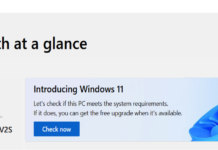Financial type risk is the possibility that an investment will lose value. It is a measure of the volatility of a security or portfolio. The risk of an investment can be measured by its standard deviation, which measures how much the price changes over time. The deviation is directly proportional to the risks.
There are two types of financial type risks: systematic and unsystematic risks. Systematic risks affect all investments in a particular market, such as inflation or interest rates.
Unsystematic risks affect only certain assets in a specific market, such as company-specific events like bankruptcy or mergers and acquisitions. The importance of understanding what is financial risk is crucial to choosing the appropriate risk management system.
Financial risk management is the process of identifying, analyzing, and controlling financial type risks. It is a way to protect an organization from the adverse effects of uncertainty.
The importance of financial type risk management is that it helps organizations identify and manage their risks to avoid any potential losses. Financial type risk management can be done using different techniques such as hedging, diversification, and insurance.
TYPES OF FINANCIAL RISKS
- MARKET RISK
- Market risk is the risk that the value of an asset will change due to changes in market conditions.
- The most common types of market risk are interest rate risk, currency risk, and equity price risk.
- The process of identifying, measuring, and managing the risks that arise from changes in market prices is known as market risk management.
- CREDIT RISK
Credit risk is the risk that a borrower will not repay a debt. It is also the risk that an issuer of securities will not pay interest or principal when due.
This is usually measured by the probability of default, which is the probability that a borrower will not repay its debt obligations. The higher the likelihood of default, the higher the credit risk.
Credit risk management is a process used by lenders to assess the creditworthiness of borrowers. Credit risk management’s primary goal is to minimize the probability and impact of losses from defaults on loans or investments.
- LIQUIDITY RISK
The risk that a company may or may not meet its short-term obligations is known as liquidity risk. This can happen when the company has too much cash on hand and not enough investments or too many assets and not enough money.
The liquidity risk measures how quickly an asset can be converted into cash. The higher the liquidity, the more quickly a purchase can be converted into cash.
The management of risks associated with a company’s inability to meet its short-term obligations is known as liquidity risk management.
- OPERATIONAL RISK
Operational financial risk is the risk of loss arising from inadequate or failed internal processes, people and systems, or external events.
Operational risk is a broad term that encompasses many different types of risks. These include:
– Business interruption
– Data breach
– Financial fraud
– Regulatory noncompliance
– Reputational damage
Operational risk management is a systematic approach to identifying and managing the risks that can affect an organization’s ability to deliver its products or services.
The goal of operational risk management is to identify and mitigate potential threats before they impact the organization.
CONCLUSION
The different financial type risks can impact the organization to a great extent. Thus, it is recommended to opt for appropriate risks management for safety in the long run.




























![Sites like project free tv [2019] project free tv](https://www.techgiga.net/wp-content/uploads/2019/05/sites-like-project-free-tv-100x70.jpg)











